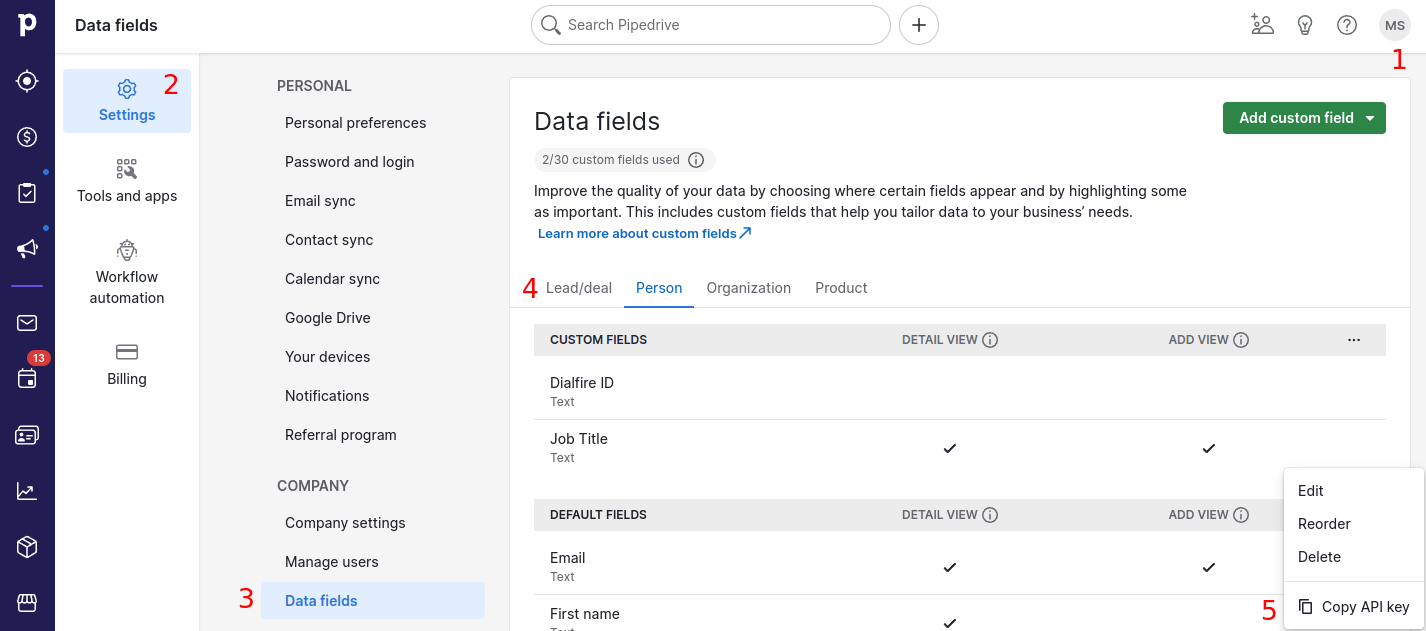Pipedrive App
In order to share your data between Dialfire and Pipedrive you need at least a Dialfire account and a Pipedrive account.
Installation
-
Install the Dialfire App in your Pipedrive account via this link.
-
You will then be redirected to Dialfire where you also need to log in. It is important that your user has administrator rights in Dialfire.
-
After successful login, you will be redirected to the app configuration page.
Configuration
Data synchronization is based on pipeline stages in Pipedrive and campaigns in Dialfire, i.e. all deals within the specified stage are transferred to Dialfire for further processing. Changes to contact data in Dialfire are transferred back to Pipedrive. Calls and call recordings made in Dialfire show up in the activity list of the Pipedrive deal.
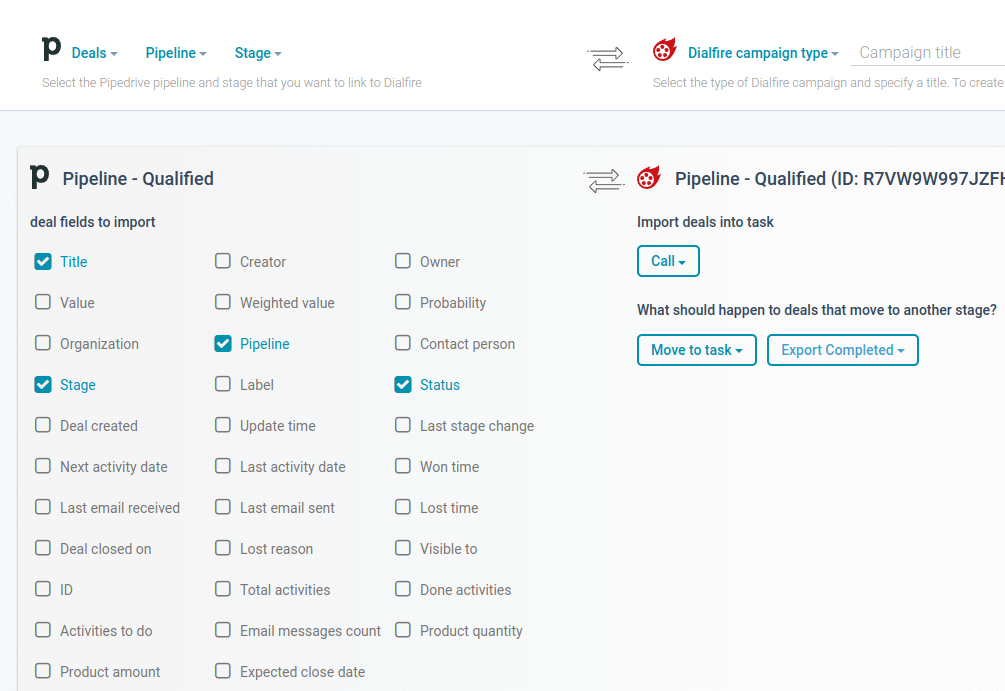
On the left side, select the desired pipeline and stage in Pipedrive. On the right side, select a campaign template in Dialfire. You can also set the campaign title in Dialfire. Then click Create.
This creates the connection and also a new campaign in Dialfire. An additional entry appears on the configuration page where the connection can be further configured.
The configuration can be changed at any time. If you want to adjust the configuration at a later time, you just need to open the configuration page again.
To change the configuration of your connection, click Edit.
On the left side you can define which fields of your deals should be shared with Dialfire. By default, many fields are already selected. You can adjust this setting at any time. Changes to the fields you have activated here will also be transferred back from Dialfire to Pipedrive.
On the right side you can select the Dialfire Task in which the data should be imported. In most cases you can keep the default setting.
As soon as you press Edit again, the changes will become active.
To transfer the deals from your Pipedrive stage to Dialfire, please press Synchronize. This will start the synchronization. From now on, synchronization will be automatic, i.e. new deals in the stage will automatically be transferred to Dialfire. Deleted deals or deals that are moved out of the stage in Pipedrive are also removed from Dialfire.
The connection can be deleted via Delete.
You can create as many connections as you want. For example, you could create a stage in Pipedrive for initial lead calls and a stage for follow-up calls and call them in different campaigns in Dialfire. But you can also make multiple calls in Dialfire if you adjust the Taskflow accordingly.
Dialfire contact telephony
Log in to Dialfire to call the contacts from your Pipedrive stage.
For each Pipedrive stage you link to Dialfire, a new campaign is created in your Dialfire account.
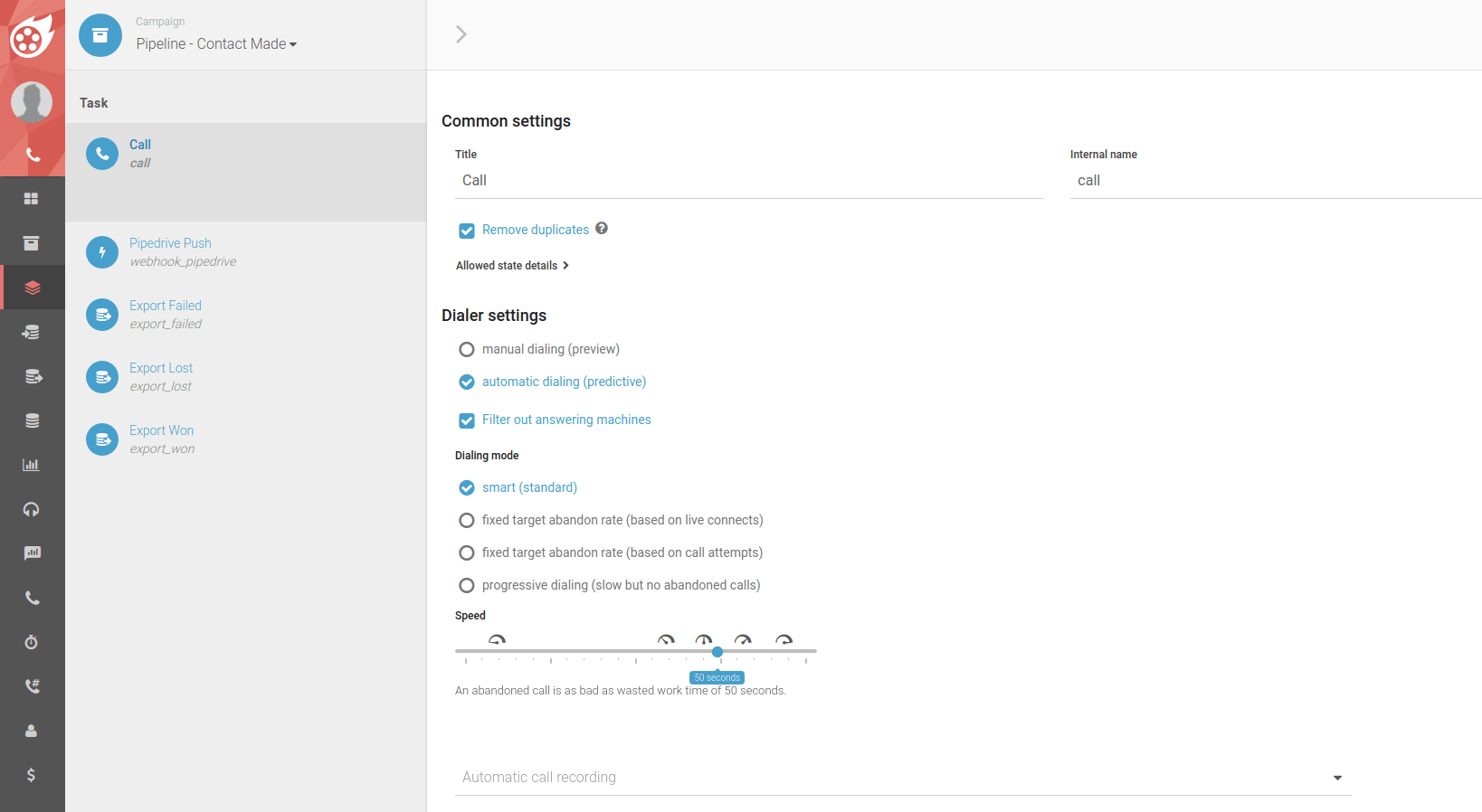
Depending on which campaign template you have chosen, different tasks and contact forms are automatically created in Dialfire. You can adjust this default configuration to your individual needs at any time.
If you have not used Dialfire yet, please have a look at our documentation or contact our support team.
Common to all campaign templates is the "Pipedrive Push" webhook task. Through this task, contact changes and call results are transferred from Dialfire to Pipedrive. By default, the Taskflow is already configured to transfer the changes to Pipedrive following each call. However, you can always customize the Taskflow according to your own needs.
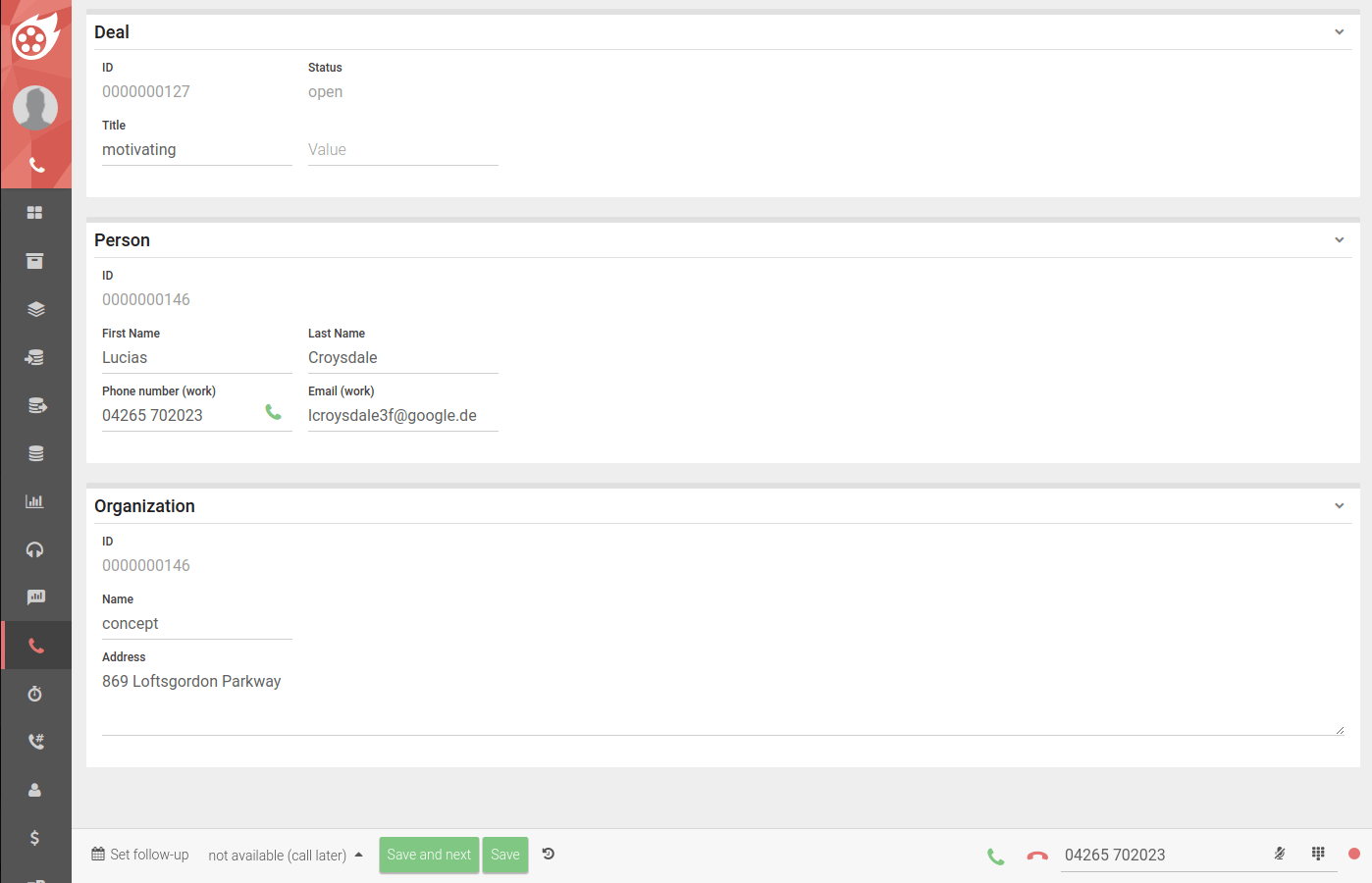
The same applies to the campaign contact form. It is also preconfigured and can be customized according to your requirements.
Updating Pipedrive objects
Pipedrive objects will be updated by moving the contacts in Dialfire to the "Pipedrive Push" webhook task.
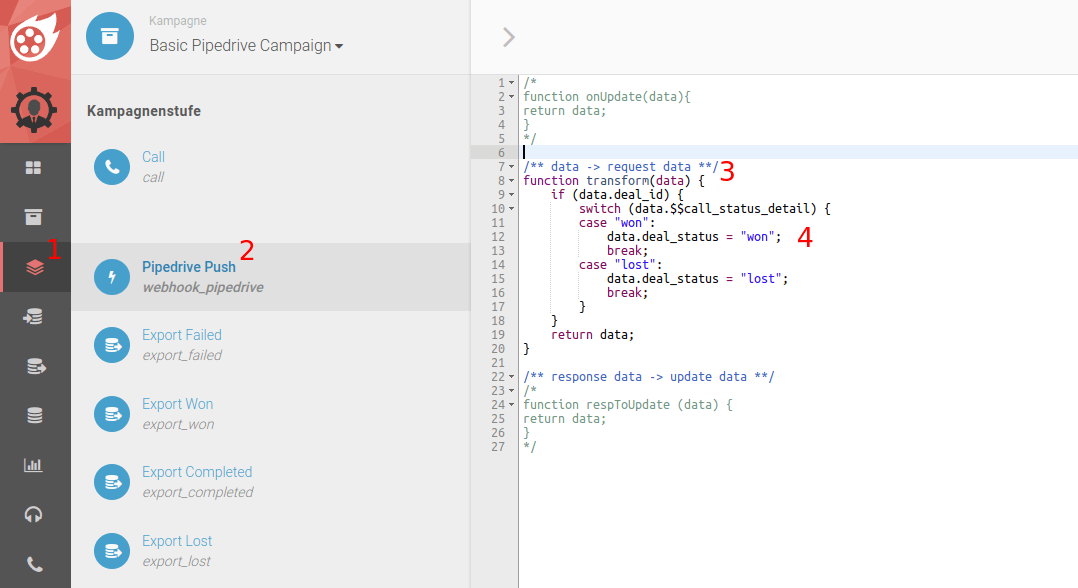
The webhook task is already pre-configured, so in many cases you do not need to make any changes. However, if you have special requirements, you can implement them in the script area of the webhook. To do this, select the Tasks module in Dialfire (1). Then open the "Pipedrive Push" webhook task (2) and then the "Script" tab at the top right. Within the script area there is a "transform" function (3). A minimal script is already defined here that sets the "deal_status" to "won" if the previous phone call in Dialfire was completed with the status "won" (4).
The Pipedrive object to be updated is determined by a corresponding field name prefix. The following prefixes can be used:
- deal_ corresponds to a deal field in Pipedrive (e.g. deal_title)
- person_ corresponds to a person field in Pipedrive (e.g. person_first_name)
- organization_ corresponds to an organization field in Pipedrive (e.g. organization_name)
For example, to update the title of a deal, you have to use the field name "deal_title". To update the first name of a person, you have to use the field name "person_first_name" in Dialfire, etc.
Additionally to the three prefixes mentioned above there are also some special fields. They can be used to create notes or change the "owner" of a "call activity". By default, Pipedrive automatically sets the user who registered the Dialfire-Pipedrive-Connector as the owner of newly created objects:
- pd_call_user assignes the created call activity in Pipedrive to the to the specified numeric Pipedrive user id
- deal_note creates a note on the deal with the content of this field
- deal_note_user assignes the deal note to the specified numeric Pipedrive user id
- person_note creates a note on the person with the content of this field
- person_note_user assignes the person note to the specified numeric Pipedrive user id
- organization_note creates a note on the organization with the content of this field
- organization_note_user assignes the organization note to the specified numeric Pipedrive user id
Custom fields are represented in Pipedrive by an alphanumeric API key. If you have selected the custom fields when configuring the connector, then the API keys are automatically imported into Dialfire.
However, you can also retrieve the API keys in Pipedrive. To do this, click on your user (1) and open the "Company settings". Then select "Settings" (2) -> "Data fields" (3) -> the corresponding Pipedrive object (4) -> the ...-menu next to the custom field -> and finally "Copy API key" (5).
